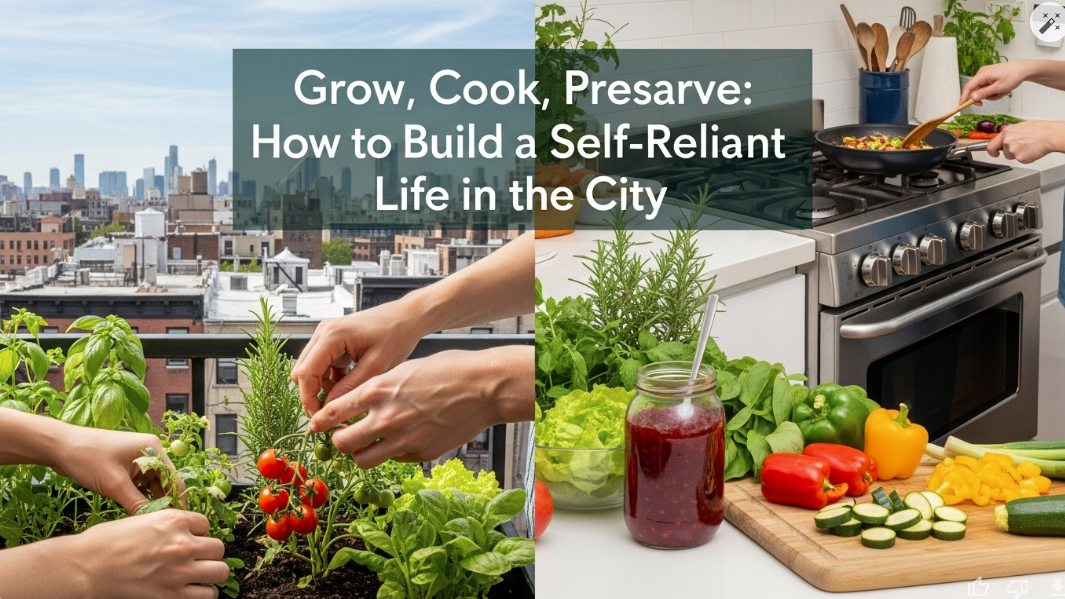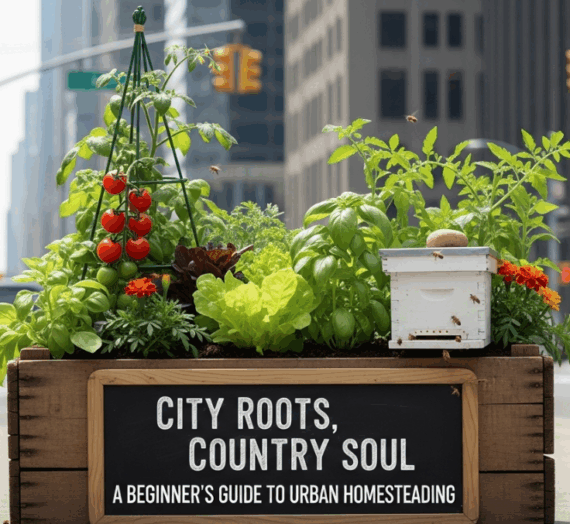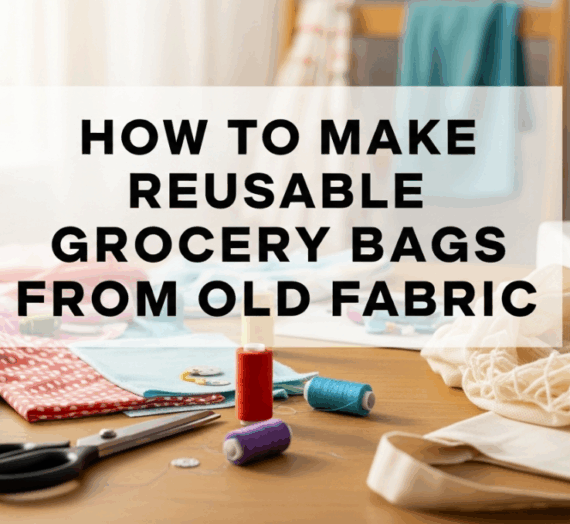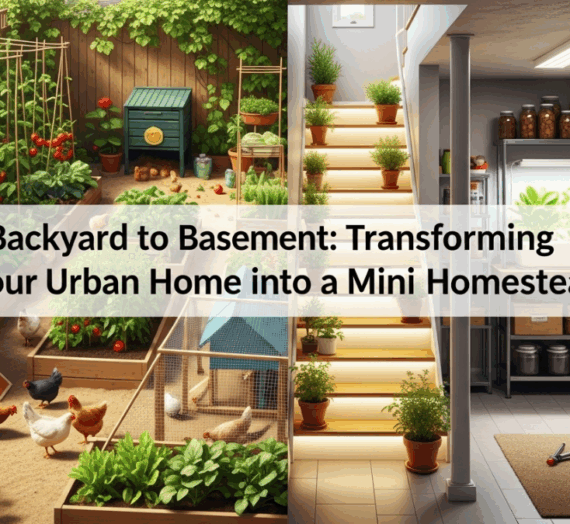Urban Self-Reliance: Grow, Cook, Preserve in the City
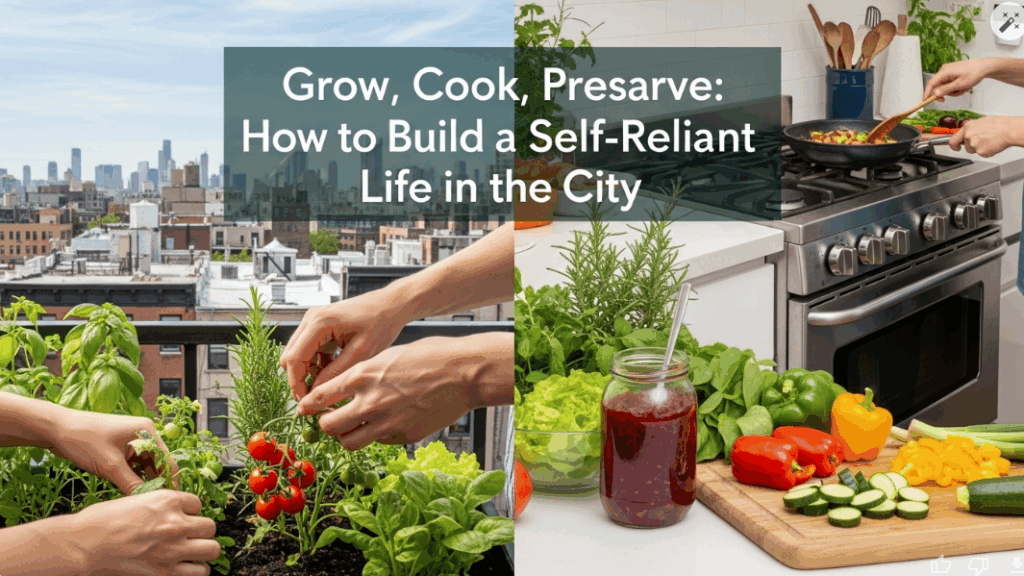
Introduction
In today’s fast-paced urban world, many people crave a lifestyle rooted in simplicity, health, and sustainability. Urban dwellers are increasingly turning to the principles of self-reliance growing food at home, cooking fresh meals, and preserving their harvests. Whether you live in a high-rise apartment or a townhouse with a small yard, this guide will help you start your journey toward a more independent life. Learn how to grow, cook, and preserve your way to urban sustainability.
For an overview of global perspectives on urban agriculture and food security, see the FAO’s recent reports and analysis. FAO: The State of Food and Agriculture 2023.
The Challenge
Living in the city presents unique obstacles to self-reliance. Limited space, lack of soil, time constraints, and reliance on grocery chains can make it difficult to feel in control of your food and lifestyle. Many urban residents also face budget pressures and rising food costs, creating a dependency on packaged and convenience meals that lack nutrition and sustainability.
Why This Matters
Building a self-reliant lifestyle empowers you to take charge of your health, reduce your ecological footprint, and become less dependent on global supply chains. According to a 2023 report from the Food and Agriculture Organization (FAO), urban agriculture could help feed up to 20% of the global population by 2050. Beyond food security, self-reliance reduces waste, encourages mindfulness, and fosters deeper connection with the seasons and the natural world even in the heart of the city.
Source: FAO The State of Food and Agriculture 2023.
Step-by-Step Guide
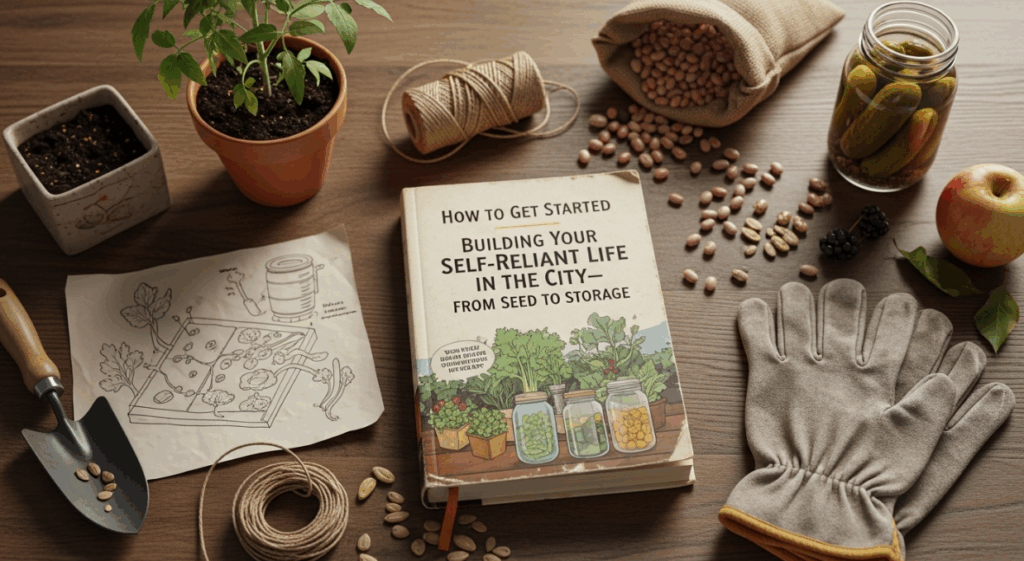



Here’s a breakdown of how to get started building your self-reliant life in the city from seed to storage.
| Step | What to do | Quick tip |
|---|---|---|
| Start a Compact Urban Garden | Begin with simple crops that thrive in containers or small plots. | Use windowsills or vertical towers |
| Master Urban Composting | Install a worm bin or Bokashi system to compost indoors. | Try Bokashi for small kitchens |
| Cook Seasonally from Scratch | Create weekly meal plans based on harvests. | Plan simple recipes |
| Preserve Your Harvest | Water bath can, dehydrate, freeze, or ferment excess produce. | Follow tested canning guides |
| Build a Pantry of Essentials | Stock staples and preserved goods for year-round meals. | Rotate stock and label jars |
1. Start a Compact Urban Garden
Begin with simple crops that thrive in containers or small plots. Leafy greens, cherry tomatoes, peppers, herbs, and radishes are perfect for urban setups. Use windowsills, balconies, rooftops, or raised beds. Consider hydroponics or vertical garden towers to maximize your yield in minimal space.
For container and vertical gardening inspiration, see local extension resources or urban agriculture reviews. Example: FAO Alternative pathways to 2050 (urban agriculture context).
2. Master Urban Composting
Kitchen scraps are a goldmine. Install a worm bin under your sink or use a Bokashi system to compost indoors without odor. Compost enriches your soil and keeps waste out of landfills.
Indoor Bokashi systems are a compact option for city kitchens beginner guides are available (e.g., university extension and practical guides). Bokashi composting overview.
3. Cook Seasonally from Scratch
Learn to cook with what you grow. Create weekly meal plans based on your harvests and local market offerings. Cooking at home reduces food waste, saves money, and reconnects you with the food you eat.
4. Preserve Your Harvest
Once you start growing more than you can consume, it’s time to preserve. Try water bath canning for jams, salsas, and pickles; dehydrate fruits and herbs; or freeze chopped vegetables in meal-sized portions. Fermentation is another easy and healthy method to extend shelf life.
Follow tested canning and preserving guides to stay safe. See Ball’s official canning guides for step-by-step instructions: Ball® Canning & Preserving Guides.
5. Build a Pantry of Essentials
Stock your pantry with staples like rice, beans, oats, flour, and oil. Combine with your preserved goods to create meals year-round. Add homemade sauces, spice blends, and vinegars to enhance flavor and variety.
Expert Advice
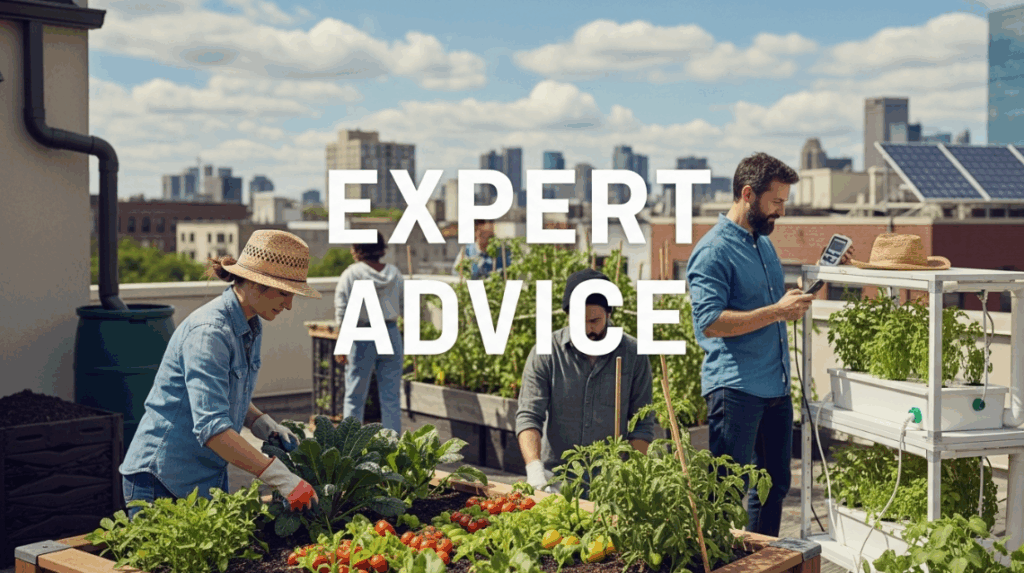
Self-reliant living doesn’t mean going it alone. Urban homesteaders and sustainability experts agree that small, consistent actions matter more than going off-grid overnight. Start with what you can do grow herbs, bake bread, or make your own cleaning products. Over time, these actions build confidence and skills that compound your self-reliance. Experts also recommend tracking your progress, keeping a garden journal, and joining local co-ops or online communities for support and knowledge-sharing.
Common Mistakes
It’s easy to feel overwhelmed when starting out. Many beginners make the mistake of trying to grow too many crops or preserve too much too quickly. Others give up when the first harvest fails. To avoid burnout:
- Start with just 3–5 crops you use often
- Invest in quality soil and proper containers
- Follow trusted canning recipes improper preservation can be unsafe
- Don’t ignore local climate and light conditions
Also, avoid perfectionism. Urban self-reliance is a process, not a performance.
Resources & Tools
To succeed in growing, cooking, and preserving, consider using these tools and resources:
- Apps: From Seed to Spoon, Gardenize, Harvest
- Books: “The Urban Homestead” by Kelly Coyne, “Preserving by the Pint” by Marisa McClellan
- Tools: Mason jars, dehydrators, indoor grow lights, fermentation crocks
- Websites: Extension services (e.g., your local ag university), Ball Canning, UrbanHarvest.org
Useful starting points: Ball® canning guides and local extension pages for regional tips. For Bokashi composting introduction, see Bokashi guide (university extension).
Bookmark these for future reference, and keep building your knowledge base over time.
Actionable Summary
If you want to build a self-reliant life in the city, start by growing a few vegetables or herbs. Learn to cook simple meals from fresh ingredients, and preserve anything you don’t eat immediately. Use compact spaces, be resourceful, and don’t aim for perfection. Track your growth, ask for help, and focus on consistency over scale. With each step, you gain control over your food, reduce your impact, and create a healthier, more resilient lifestyle.
Ready to grow your own food and take back control of your lifestyle? Subscribe to our newsletter for monthly tips on urban gardening, home cooking, and sustainable living. Share this article with a friend and start your self-reliant journey together today!
Explore more articles on sustainable urban living, home gardening, and food preservation by visiting our blog hub: Blog Hub. Let’s grow something great together!
References
